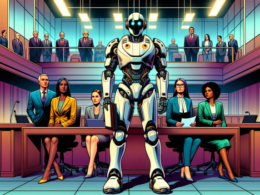Computer Vision (CV) has undergone rapid advancements in recent years, becoming an integral part of our daily lives. While it may appear as a new and exciting innovation to the average person, CV has actually been evolving for decades. The foundations for many of the algorithms used in CV today were laid in the 1970s through extensive studies. However, the emergence of deep learning around 10 years ago revolutionized the field, particularly in solving complex problems using neural networks.
In the past, classical CV relied on engineers’ expertise in formulating and solving mathematical problems. This approach, known as “classical” CV, coexisted with deep learning-based CV. Deep learning, powered by convolutional neural networks (CNNs) and region-based CNNs (R-CNNs), excelled at problems like object detection and classification. It introduced a new dimension to CV, utilizing big data and surpassing the limitations of handcrafted rules.
Advancements in Object Detection, Feature Extraction, and Semantic Segmentation
Object detection, a challenging task in classical CV, was significantly enhanced by deep learning methods. With well-trained networks and large labeled image databases, the need for explicit, handcrafted rules was eliminated. Deep learning algorithms proved effective in detecting objects from various angles and circumstances.
Similarly, the deep learning approach to feature extraction minimized the complexity and tedium of classical methods. By training the algorithm with diverse data, overfitting was prevented, and a high accuracy rating was achieved in real-world scenarios. CNNs displayed exceptional performance in this task.
Deep learning also transformed semantic segmentation, with the U-net architecture showing outstanding results. This eliminated the need for complex manual processes, making the approach much more efficient and accurate.
The Relevance of Classical CV in SLAM and SFM Algorithms
Despite deep learning’s remarkable contributions, classical CV techniques still outperform newer approaches in simultaneous localization and mapping (SLAM) and structure from motion (SFM) algorithms. These techniques involve understanding and mapping physical areas using images.
SLAM focuses on map building and updating while keeping track of the agent’s position. This technique made autonomous driving and robotic vacuums possible. SFM, on the other hand, creates 3D reconstructions using multiple views from unordered sets of images. While sophisticated mathematics and geometry are required for both SLAM and SFM, close approximations and intrinsic camera properties simplify the computational requirements.
With respect to these particular challenges, deep learning still lacks the elegance and efficiency of classical CV techniques. When complex math and direct observation are necessary, and obtaining proper training data is difficult, traditional methods prove more effective.
It is crucial to recognize that deep learning did not render classical CV obsolete. Instead, it brought scalability and opened up new possibilities for the field. However, a balanced approach is necessary, evaluating each problem individually to determine whether classical techniques or deep learning methods are the better fit.
“When a field is disrupted by new technologies, we must be cautious to pay attention to detail and identify case by case which problems will benefit from the new techniques and which are still better suited to older approaches.” – Shlomi Amitai
While the transition to deep learning-based CV has expanded the scalability of solutions, it also marks the loss of an artistic and creative element. Classical CV required deep thinking and innovation to extract features and understand complex visual components. Engineers in the field now find themselves integrating pre-existing deep learning tools instead of creating unique solutions.
Looking ahead, network development in the next decade will likely prioritize “understanding” over “learning.” The goal will be to facilitate deeper comprehension of information within the network, minimizing the need for excessive data. The CV space is sure to hold surprises, and the interplay between classical techniques and deep learning methods will shape the future progression of CV.
“The next ten years are sure to hold some surprises in the CV space. Perhaps classical CV will eventually be made obsolete… However, for now at least, these tools are the best options for approaching specific tasks and will form the foundation of the progression of CV throughout the next decade.” – Shlomi Amitai
Shlomi Amitai, Algorithm Team Lead at Shopic, believes that while the future of CV is uncertain, it is an exciting and transformative journey. Progress and breakthroughs in both classical and deep learning-based CV are expected, and the industry must adapt while incorporating the artistic aspects into new methodologies.










